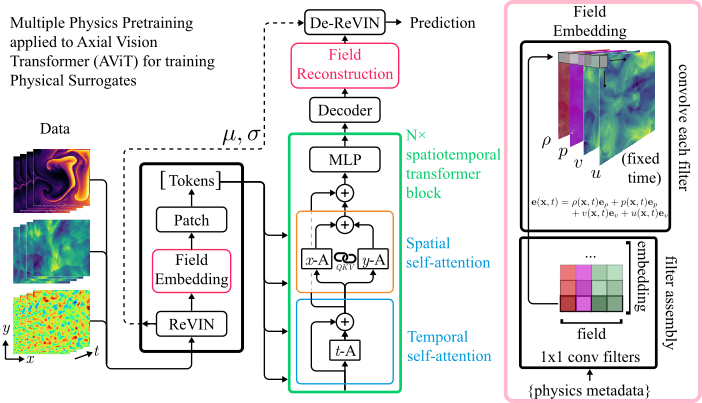TL;DR:
- A global team of scientists, led by the University of Cambridge, is embarking on a pioneering venture called Polymathic AI.
- Polymathic AI aims to harness the technology behind ChatGPT to build an AI tool for scientific discovery.
- Unlike ChatGPT, Polymathic AI will focus on numerical data and physics simulations across various scientific fields.
- The initiative seeks to bridge disparate scientific domains, enhancing interdisciplinary research.
- Polymathic AI has a diverse team of experts from institutions like Simons Foundation, NYU, Princeton, and Lawrence Berkeley National Lab.
- Transparency and accessibility are core principles, with plans to democratize AI for scientific applications.
Main AI News:
In a groundbreaking move, a global consortium of scientists, with notable participation from the esteemed University of Cambridge, has embarked on a pioneering research endeavor. Harnessing the sophisticated technology that underpins ChatGPT, they are forging ahead to construct an AI-powered instrument tailored specifically for scientific exploration.
While ChatGPT excels in the realm of linguistic prowess, this formidable AI endeavor is set to tread uncharted territories. It will glean wisdom from extensive numerical datasets and intricate physics simulations spanning the spectrum of scientific disciplines. This remarkable initiative, aptly christened “Polymathic AI,” was unveiled recently, accompanied by a series of scholarly publications gracing the arXiv open access repository.
Shirley Ho, the principal investigator at Polymathic AI and a luminary at the Flatiron Institute’s Center for Computational Astrophysics in New York City, remarked, “This will completely transform the landscape of AI and machine learning applications in the realm of science.” She further elucidated the concept behind Polymathic AI, drawing an analogy, stating, “It’s akin to mastering a new language when you already possess proficiency in five.”
Incorporating a pre-trained model of colossal proportions, referred to as a foundation model, offers a twofold advantage. It expedites the development process and augments precision, even when the training data appears unrelated to the current scientific quandary. Miles Cranmer, a co-investigator hailing from the University of Cambridge, stated, “The formidable computational resources required for extensive foundation model research have historically been a stumbling block. Thanks to our partnership with the Simons Foundation, we now possess unique resources to initiate the prototyping of these models for basic scientific applications—a truly exciting prospect.”
Siavash Golkar, another co-investigator and a guest researcher at the Flatiron Institute’s Center for Computational Astrophysics, emphasized the potential of Polymathic AI in uncovering commonalities and connections between disparate scientific domains. He elaborated, “Historically, some of the most influential scientists were polymaths, proficient in multiple fields. Their ability to discern interconnections fueled their innovative work. As scientific disciplines become increasingly specialized, AI can serve as an invaluable tool by aggregating insights from diverse realms.“
The Polymathic AI dream team boasts luminaries from the Simons Foundation, the Flatiron Institute, New York University, the University of Cambridge, Princeton University, and the Lawrence Berkeley National Laboratory. These experts collectively encompass the fields of physics, astrophysics, mathematics, artificial intelligence, and neuroscience.
While AI tools have been employed in the past, they were primarily custom-built and trained on domain-specific data. Francois Lanusse, a cosmologist from the Center national de la recherche scientifique (CNRS) in France, voiced a prevailing limitation, stating, “Despite the rapid advancements in machine learning across various scientific sectors, most solutions are tailored to particular use cases and trained on narrowly defined datasets. This compartmentalization erects barriers within and between disciplines, impeding the potential synergies.”
Polymathic AI charts a distinct course. It aspires to glean knowledge from a diverse array of sources within physics and astrophysics initially, with plans to expand into realms such as chemistry and genomics. The objective is to harness this multidisciplinary expertise to address a multitude of scientific conundrums. Mariel Pettee, a project member and postdoctoral researcher at the Lawrence Berkeley National Laboratory, articulated the project’s overarching goal, stating, “Our aim is to amalgamate seemingly disparate subfields into a unified force greater than the sum of its parts.“
Shirley Ho further emphasized the divergence between ChatGPT and Polymathic AI. The latter aims to steer clear of inaccuracies by treating numbers as concrete entities, not merely characters akin to letters and symbols. Furthermore, the training dataset will encompass genuine scientific datasets, offering insights into the underlying principles governing our cosmos.
Crucially, transparency and accessibility constitute core tenets of the Polymathic AI initiative. Shirley Ho affirmed, “Our mission is to render every facet of this venture public. We aim to democratize AI for scientific applications, envisioning a future where a pre-trained model can be made accessible to the global scientific community, thereby enhancing scientific analyses across diverse problem domains.“
Conclusion:
The emergence of Polymathic AI marks a significant leap in the realm of scientific discovery. By harnessing the power of AI technology, this initiative promises to bridge gaps between scientific disciplines, enabling faster and more comprehensive insights across various fields. Its transparent and open approach could democratize AI for science, potentially reshaping the market by making advanced AI tools more accessible and collaborative for researchers worldwide.

